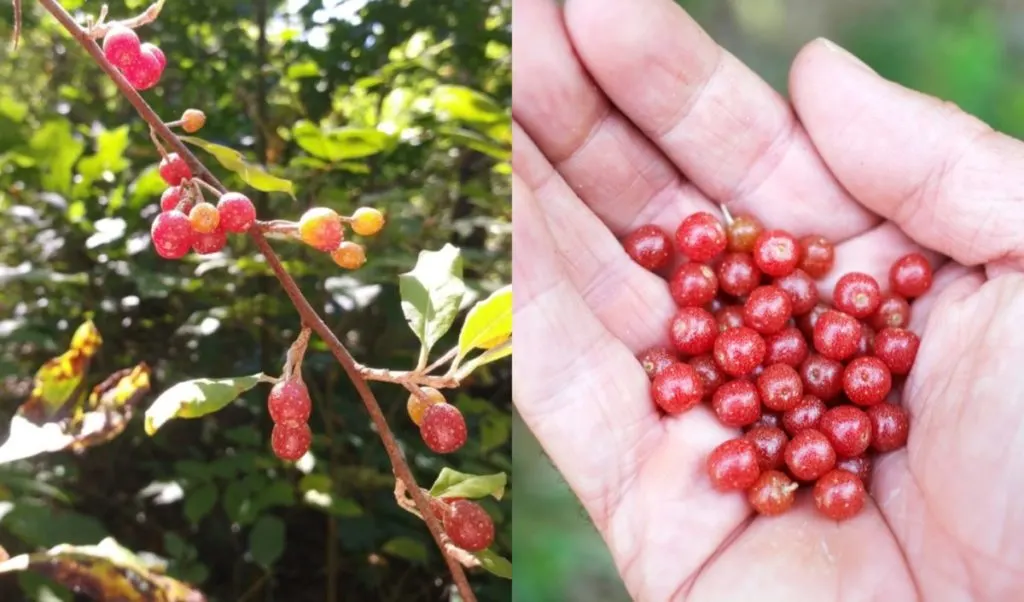
Raising perennial berry bushes on the homestead can take years of effort, often with minimal reward.
A better option? Focus on foraging the wild fruit abundant in your region. Autumn olive berries are an underappreciated natural food source that grows plentifully across North America.
Keep reading to learn about foraging and using autumn olive berries so you can put this (overly) prolific plant to use.
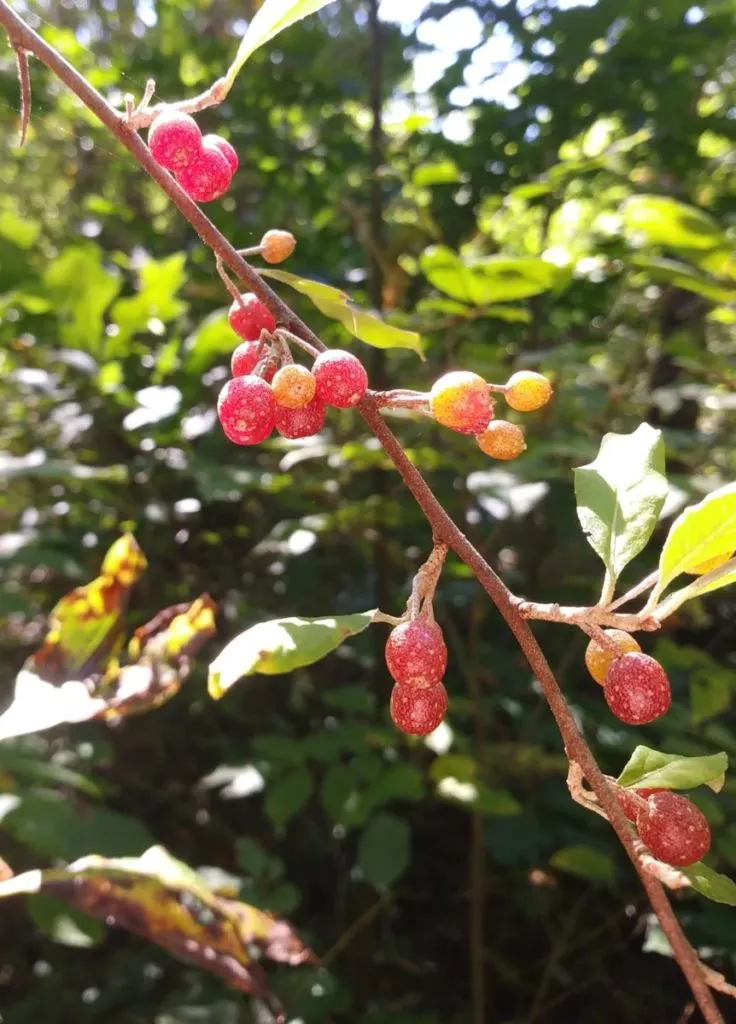
What is Autumn Olive?
The autumn olive (Elaeagnus umbellate) goes by many names, including Japanese silverberry, autumnberry, and oleaster. Its jewel-toned fruit has no biological connection to your martini olives. Instead, it’s a silvery-leafed shrub that’s native to Asia.
Autumn olive bushes grow up to twenty feet tall and are among the few non-legume species with nitrogen-fixing properties. You can recognize them by their silver-tinted leaves and red speckled berries that ripen from late August through early November.
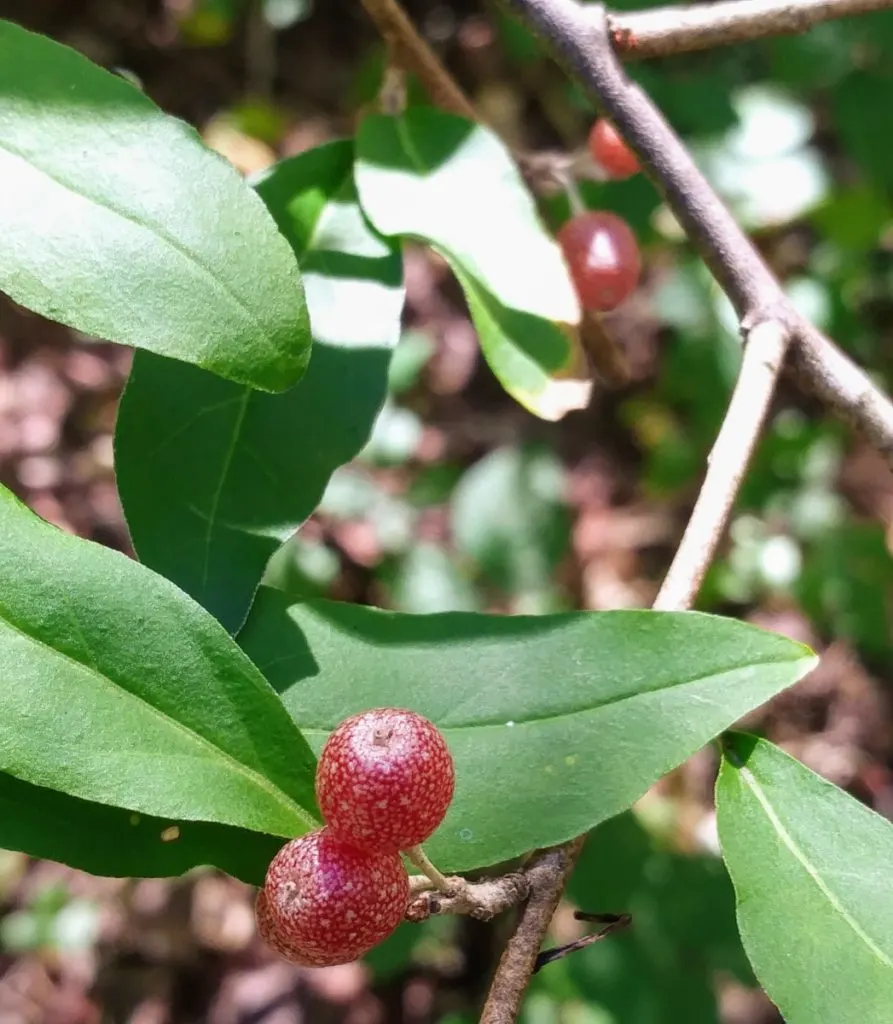
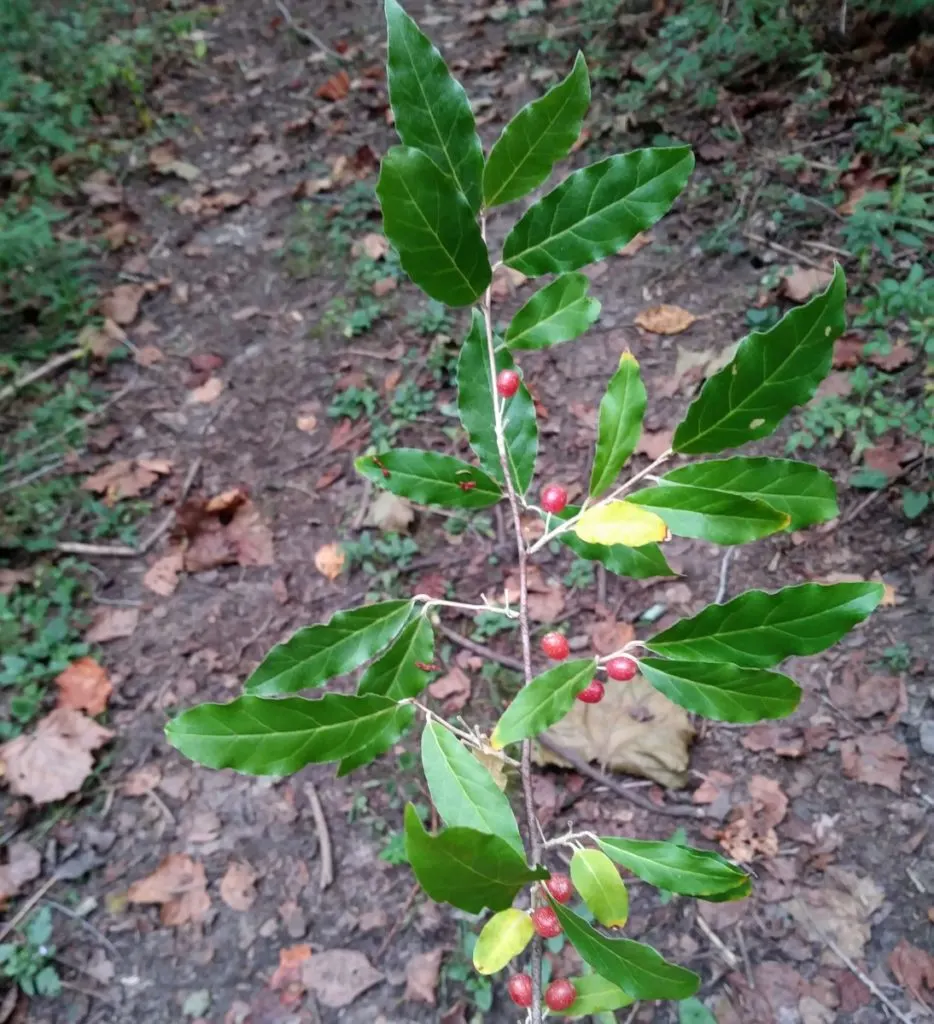
This distinctive fruit bursts with a sour tang and bitter tannins early in the season, though the berries tend to sweeten after the season’s first frost. It’s a prolific producer, as one bush can produce more than 200,000 seeds and gallons of fruit each fall.
Autumn Olives: An Invasive History
The autumn olive was first brought to the states in the 1830s and was initially promoted by the U.S. Soil Conservation Service as both a backyard ornamental and a natural form of erosion control around roads and ridges. The shrub’s ability to flourish in drought conditions and low-quality soil also made it a popular choice for replanting abandoned strip-mining sites throughout the Appalachian coalfields.
Unfortunately, the hardy bush soon became an invasive that out-competed native species. It secured its environmental niche by leafing out earlier in the spring and staying alive slightly longer in the fall than its competitors.
The ripe berries also proved irresistible to birds, who then spread its seeds to new habitat spaces. In fact, autumn olive seeds won’t germinate unless they are first digested.
Today, autumn olive’s uncontrollable spread has made it a major hassle, especially in places where the soil has been disturbed. It thrives along roadsides, meadows, and forest edges, usually choking out native species in the process.
There’s no denying that autumn olive bushes cause serious problems from a conservation standpoint. But here’s the good news—its berries are nutritious, easy to pick, and can be used in dozens of recipes.
Best of all, taking time to harvest this berry may slow down its spread because you reduce the number of seeds available for birds to eat and subsequently replant.
In other words, picking autumn olive berries lets you take advantage of a healthy and plentiful natural food source while potentially aiding the native plants in the same ecological niche.
What Do Autumn Olives Taste Like?
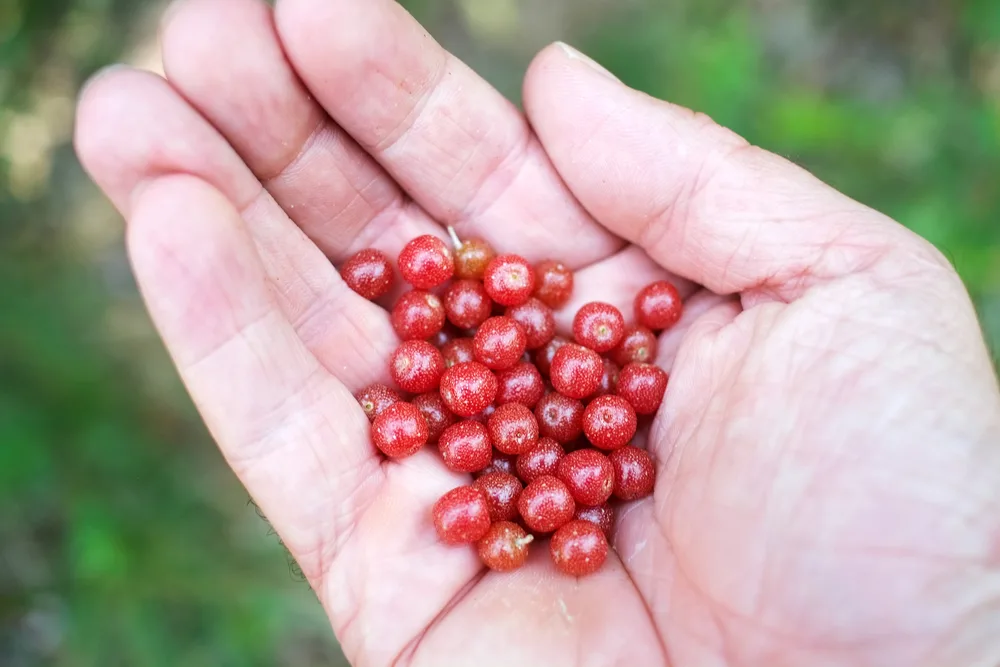
Don’t be dissuaded by your first taste of autumn olive berries; this tart fruit tends to be astringent early in the season due to its high tannic acid content. The berries sweeten as the weather cools, and these acids get leeched out. At this stage, they are perfect for fresh eating or in any recipe that calls for cherries, currants, or raspberries.
The Autumn olive’s sour taste highlights many health benefits within the berry. They contain an estimated 18 times more lycopene than tomatoes, an antioxidant celebrated for its anti-cancer benefits and role in prostate health.
It’s a mistake to spit out these berry’s chewy seeds, as they contain omega-3 fatty acids that can reduce inflammation and your risk of cardiovascular disease.
Harvesting Autumn Olive Berries
Ready to try this free food source for yourself? Autumn olive is one of the easiest plants to forage.
Look for the bush’s distinctive silver leaves along field edges and in sunny patches in the woods. While they can be plentiful along the road, it’s best to avoid these berries because of their exposure to car exhaust and other pollutants.
You can harvest autumn olive berries as soon as they turn red, though some people prefer to wait a few weeks for them to sweeten. Just know that the longer you wait, the more you will have to compete with birds for your harvest.
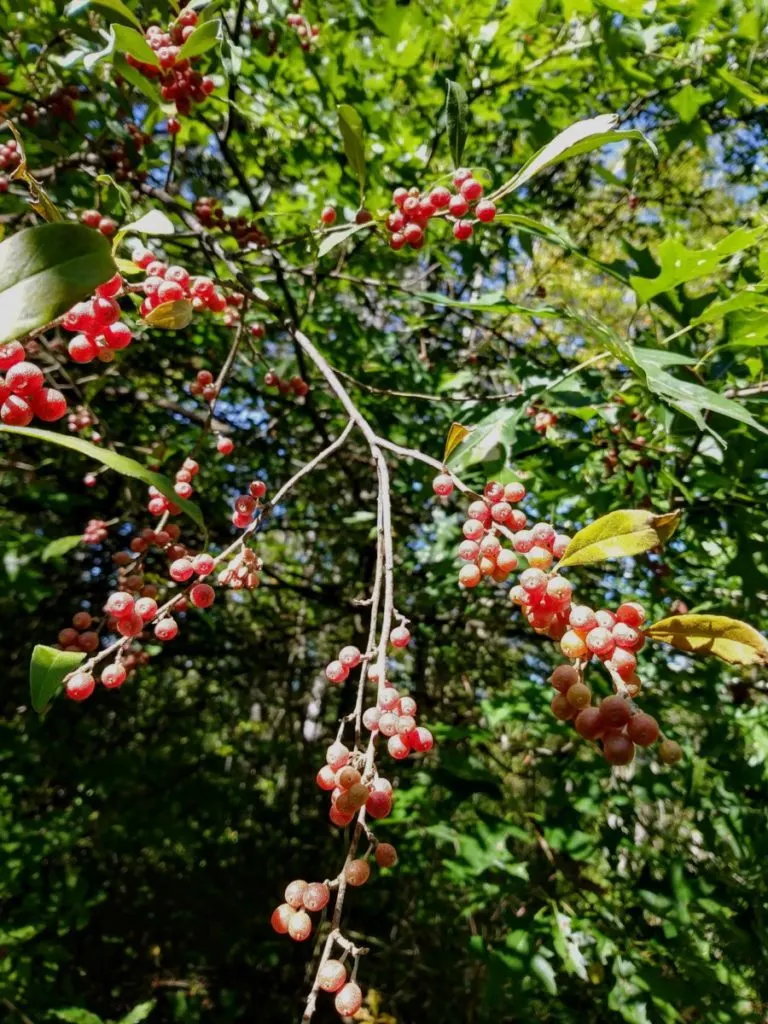
Make sure you sample the berries on every bush before harvesting, as the taste can vary dramatically based on the growing conditions. The more sun a shrub gets, the sweeter its fruit tends to be.
Once you find a promising patch, the berries will practically harvest themselves. You’ll save lots of time if you hold a wide-mouthed harvesting bucket under a branch and run your fingers over it to strip the fruit.
The small berries will fall in, along with leaves, twigs, and maybe an insect or two. No matter—you can sort through everything later. The goal at the moment is to gather as many berries as possible because they cook down quickly.
Another option is to prune off the berry-laden branches altogether and pick the fruit from them at your leisure. This method can also slow the bush’s spread for next season.
11 Recipes Using Autumn Olive Berries
Once you have your harvest, it’s time to put it to use. While autumn olives can be enjoyed fresh, many people process them into sauces or baked goods so that their sour flavor can shine through.
For most recipes, you will want to prepare the berries into a thick puree.
First, wash the berries with cold water. Most leaves, twigs, insects, and rotten berries will float to the top and can be scooped away before you rinse what remains through a colander. Don’t worry about removing every speck of plant material as the food mill will take care of that step.
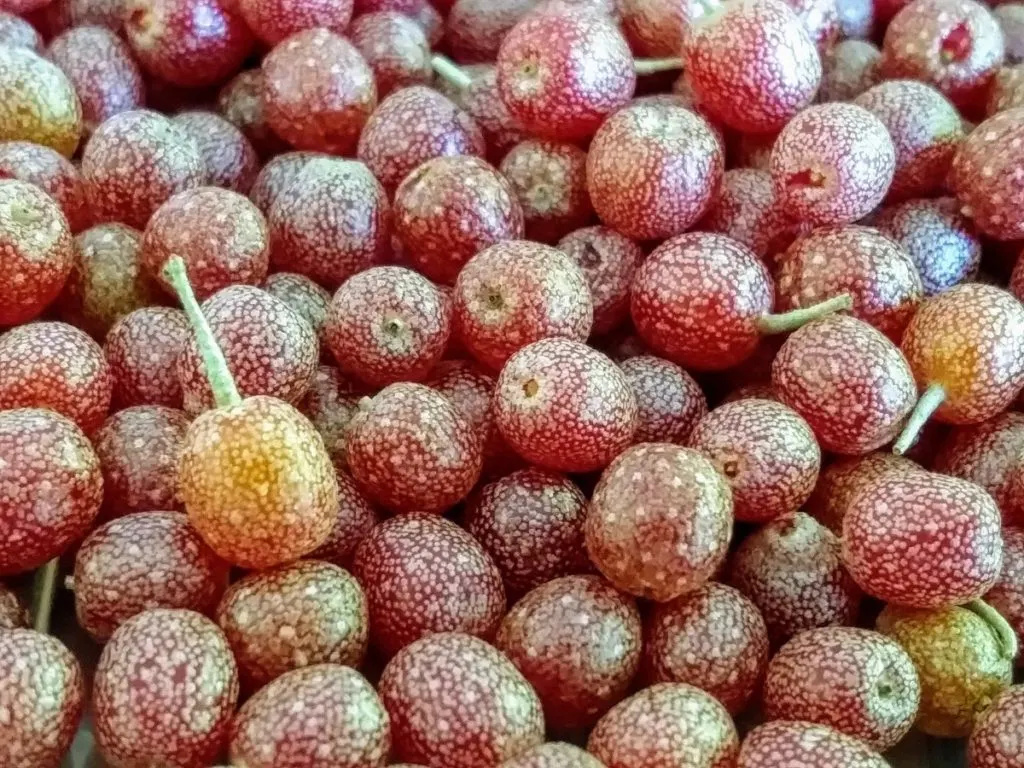
Next, you’ll boil the berries down at a ratio of eight cups berries to one cup of water. Let the mixture simmer for at least twenty minutes, occasionally mashing and stirring throughout. Once the berries have broken down, you can run them through a food mill to remove the seeds and stems.
You’ll be left with a thick red juice that might start to separate into a clear liquid with dark pulp on the bottom. Some people like to strain off this clear juice for drinking and discard the pulp, but it’s an excellent idea to simmer the whole mixture down further if you plan to use it for a recipe.
Whether you have whole berries or juice, here are 11 recipe ideas to get you started.
1. Autumn Olive Ice Cream Pie
One Acre Farm shares a recipe for an elegant dessert that uses an autumn olive sauce as a base layer over a hazelnut crust that’s topped with mascarpone ice cream.
2. Autumn Olive Tart
Channel the taste of a raspberry pie with Northern Woodland’s recipe for an autumn olive tart. It requires at least two cups of berry pulp.
3. Autumn Olive Oatmeal
My favorite way to enjoy autumn olives is as a topping in my morning oatmeal. I add several scoops of fresh-picked berries to oats accessorized with flax seed powder, chia seeds, peanut butter, and cinnamon to give my breakfast an extra sour kick.
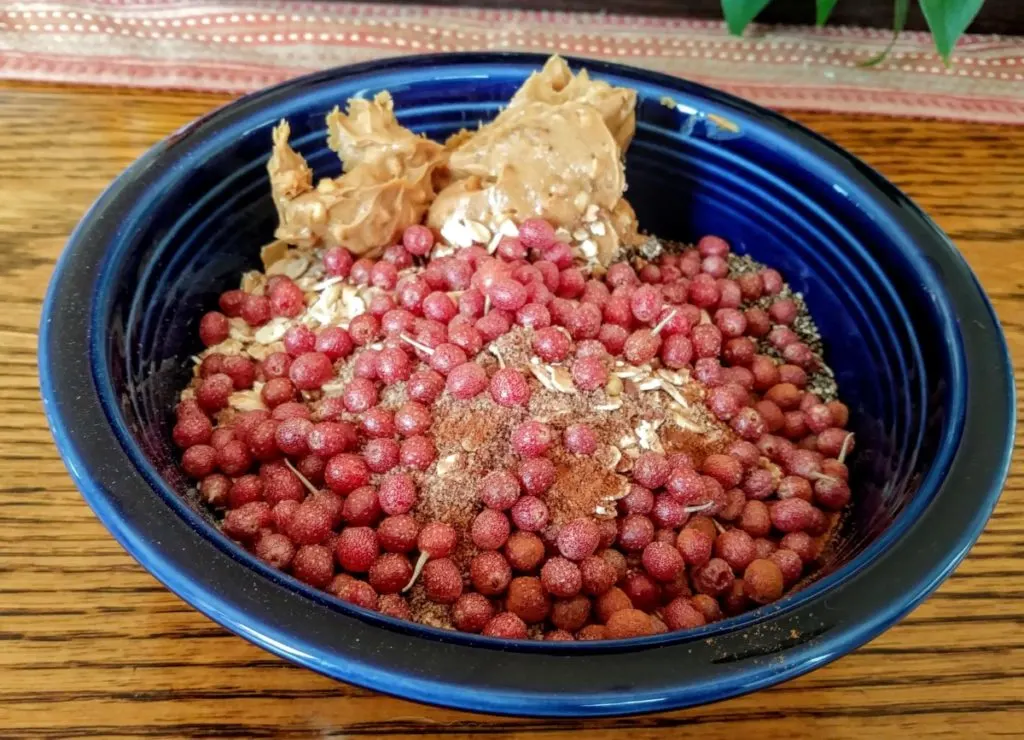
4. Autumn Olive Jam
One of the easiest ways to preserve your autumn olive harvest is through a homemade jam. Turn eight cups of fresh berries into juice as directed above, resulting in about five cups of pressed juice.
Mix ¼ cup sugar with a package of Sure Jell and combine with the fruit juice, bringing the mixture to a rolling boil. Add 3 ¼ cups of sugar and let it boil for one minute. Process the jars according to your preferred method, and you’ll end up with about six 8-oz jars of tangy jam.
Here’s a great jam recipe from Our One Acre Farm.
5. Autumn Olive Fruit Leather
For fruit snack lovers, homemade fruit leather can satisfy the craving with a healthier alternative. All you need to do is cook down your autumn olive juice into a viscous paste and spread it on the trays of a dehydrator lined with wax paper. You’ll know it’s done once the puree is tacky without being sticky.
The leather can be eaten immediately or stored in the fridge or freezer for future use.
6. Autumn Olive Cookies
Add a tang to your fall baking projects by incorporating autumn olive berries in your cookies. Though you can modify most recipes for this ingredient, Edible Wild Food’s cake-like cookies can serve as inspiration.
7. Autumn Olive Smoothie
One of the easiest ways to preserve autumn olive berries is to wash and toss them into vacuum-sealed bags and into the freezer for future use as a smoothie ingredient. You can use them as a substitute for any berry in your favorite recipe, keeping in mind you may want to adjust the flavoring slightly for some extra sweetness.
8. Autumn Olive Cordial
Concoct a refreshing alcoholic drink this fall with fresh autumn olive berries. All that’s needed are berries, sugar, vodka, and lemon juice, and Martha’s Vineyard Magazine will show you how.
9. Autumn Olive Ketchup
Though tomatoes are considered the standard ketchup ingredient, you can make a homemade batch with an extra tang by incorporating autumn olives instead.
This spicy-sweet recipe from Learning and Yearning combines peppercorns with cinnamon and allspice for an unforgettable condiment.
10. Autumn Olive Shrubs
Shrubs, or drinking vinegar, is a popular cocktail ingredient that boasts a long history as a health tonic.
Make your own from foraged autumn olives by following this basic recipe from Homestead Honey. Best of all, you can modify it for any berries you have on hand.
11. Autumn Olive Butter
Everyone loves apple butter, so consider making a similar spread with autumn olives instead. All that’s needed is to cook down your strained juice until it gets thick enough to spread. You can speed up the process by adding a few tablespoons of pectin to thicken things up.
How To Get Rid of Autumn Olive Bushes
Despite its value as a late-season fruit, there are ample reasons to work towards eradicating autumn olive on your property if you prioritize biological diversity. While this invasive bush is likely here to stay, you can take steps towards slowing its spread to improve habitat space for native plants.
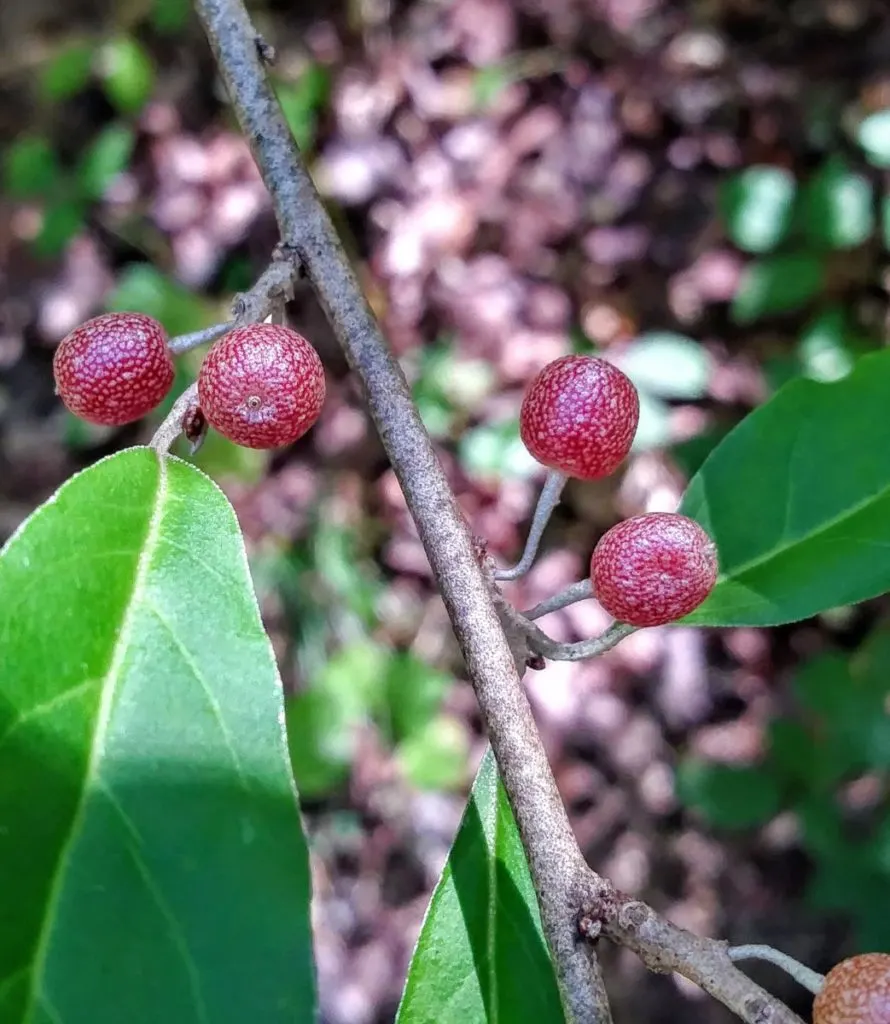
You’ll achieve the best results by pulling out the bushes in midsummer. You want the plant to have invested lots of energy into above-ground growth, but to get to them before the fruit ripens.
If the bushes are too big to hand pull, you can cut them down at the base and apply organic herbicide to the trunk. Expect to need to use multiple doses over the season to kill it, and even then, you’ll likely be fighting off new suckers growing from the stump for years to come.
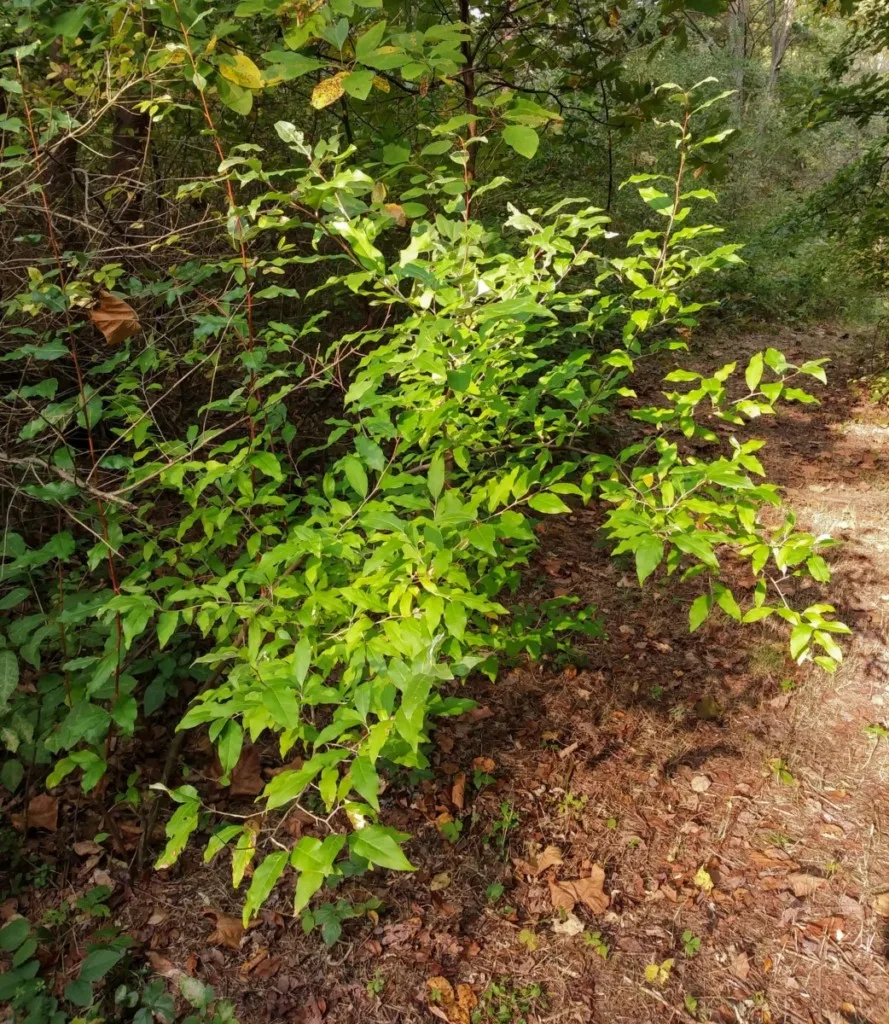
Nonetheless, consider planting native plants in the space to fill the ecological niche. Serviceberries, bramble berries, and elderberries are all options.
As with all invasives, you need to stay humble about what you can realistically accomplish. You may finally eradicate a patch, only to have birds deposit seeds there again the next season.
For this reason, it’s essential to take the long view with this edible shrub. Do what you can to control autumn olive throughout the natural spaces you care about, but consider taking time each year to reap the nutritious rewards of this prolific berry producer.

Get the famous Rural Sprout newsletter delivered to your inbox.
Including Sunday musings from our editor, Tracey, as well as “What’s Up Wednesday” our roundup of what’s in season and new article updates and alerts.

